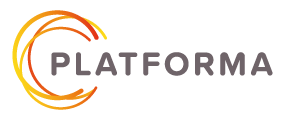5 questions on the New Urban Agenda: Citiscope interviews PLATFORMA
Citiscope, a leading media on local issues, interviewed PLATFORMA Policy adviser Wouter Boesman on the New Urban Agenda. Among with 24 other thinkers and experts, he answered 5 “Questions of the day” on the outcome of Habitat III. Here are a few highlights of the interview:
What is the most innovative or transformational idea in the New Urban Agenda?
The New Urban Agenda goes one step further in the recognition of the key role played by subnational governments. It seems self-evident when looking at cities, but the commitment to empower towns and regions through decentralisation reforms in line with the subsidiarity principle and to improve their involvement in decision-making processes is a frog-leap forward in the UN system. Moreover, it recognizes the importance of promoting decentralized cooperation as a means to reinforce the capacities of local and regional governments.
What key issue is missing from the New Urban Agenda?
The involvement of local governments in the U.?N. system, particularly in these UN agencies (like UN Habitat) that engage with local authorities — or at least work on their terrain — remains unaddressed. This is contradictory to the popular discourse on localization of global agendas, which shows a widespread recognition that most global challenges of today impact the local and need to be tackled at the local level. Local and regional governments need to get a seat at the global table. As such, localization can start from the design phase, where it is now only perceived as an implementation challenge.
How and when will we know if Habitat III was a success?
Urbanisation is a continuous, long-term trend, and the follow-up of the New Urban Agenda should therefore also happen continuously and over the longer term. The follow-up of Habitat III should go in parallel with that of the 2030 Agenda. It should not be a separated process. Capturing data on cities must happen at the city level. That can only be properly done through and with the local and regional governments. The local government associations, their regional and global organizations can assess the aggregated local data and offer part of the monitoring analysis.
What are the biggest obstacles to implementing the New Urban Agenda?
The biggest obstacle is the limited involvement of local and regional governments in the design phase of the New Urban Agenda. Certain member states object to greater involvement of local and regional governments in the implementation of the New Urban Agenda. If the agenda is to be successfully implemented, local and regional governments should be in the driver’s seat of implementation, and be closely involved in the design of the follow-up mechanism and the accompanying actions as well as in the monitoring and evaluation phases. The limited or non-qualitative decentralization in many countries is a non-conducive context to achieve the New Urban Agenda, and this will need to be addressed.
How do you hope the world’s cities will have changed in two decades?
We hope to see a world where inequalities have been drastically reduced, one of the major challenges for urban life today. As a network of local governments that engages in international cooperation, we would want to see cities committed to assisting one another in the achievement of sustainable development, in an open and self-critical manner. This could be through decentralized cooperation partnerships, such as peer-to-peer exchange, thematic networks, policy co-production. Networks like PLATFORMA will continue to advocate for the relevance of city to city cooperation for cities and for the global goals.
